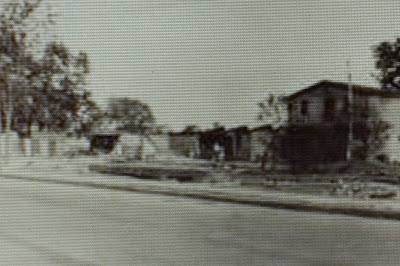 West side of Harbor Road between Leyden and Richmond Terr. - Apr 23, 1932
West side of Harbor Road between Leyden and Richmond Terr. - Apr 23, 1932View Larger MapSame view today
These shots of Harbor Road in Mariners Harbor start with the second house north of Summerfield United Methodist Church. All of the houses shown here are still in existence in one way or another. Let me show you.
 Map 1874- The first house in the photo above is that of "Capt.Jones" followed by those of "F. Jones", "Capt. J. Wright", "M. Van Name", and "Capt. Tomlinson". I think I safe assuming that the captains here are oyster captains. A nice indication of the neighborhood's famous past.
Map 1874- The first house in the photo above is that of "Capt.Jones" followed by those of "F. Jones", "Capt. J. Wright", "M. Van Name", and "Capt. Tomlinson". I think I safe assuming that the captains here are oyster captains. A nice indication of the neighborhood's famous past.
View Larger Map
The Capt.Jones house - The porch columns match those in the photo but the railings and beautiful eaves and wood shingling have been removed or covered.

View Larger MapThe F. Jones House - All the beautiful detail has been removed and siding of some sort has covered up the wood shingle. The loss of the porch leaves this house a big blank, unattractive box.

View Larger Map
The first house, that of Capt. Wright, is presently greatly obscured by foliage (so I'm not showing it). You'll have to trust me when I write that the front porches have been removed.
The second, that of M. Van Name (and one of many in the neighborhood), is visible, as is the awful faux-brick asphalt shingle that now covers it. Similar to many of the captains' homes that once lined the Terrace, this house has always been one of my favorite.

View Larger Map
Finally, we have the house of Capt. Tomlinson. It's the most beautifully preserved of this series of houses, though the porch columns have lost their elaborate shapes and are simple four sided columns now and the decorative eaves is gone. Still, the dark trim and curved door is much to my liking.
Well, I suspect this is my last post for 2010. I hope you few readers have enjoyed my pretty slack efforts. I appreciate everyone's comments and I look forward to more feedback and questions in the coming year from everybody.
To everyone, a blessed and happy New Year!














































